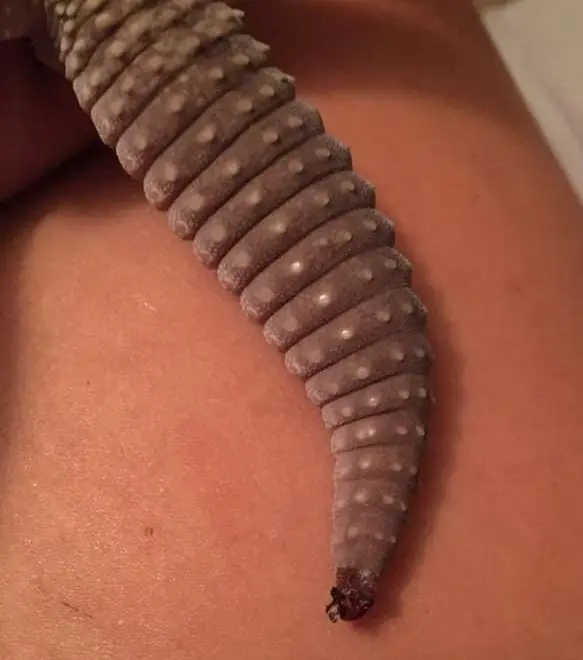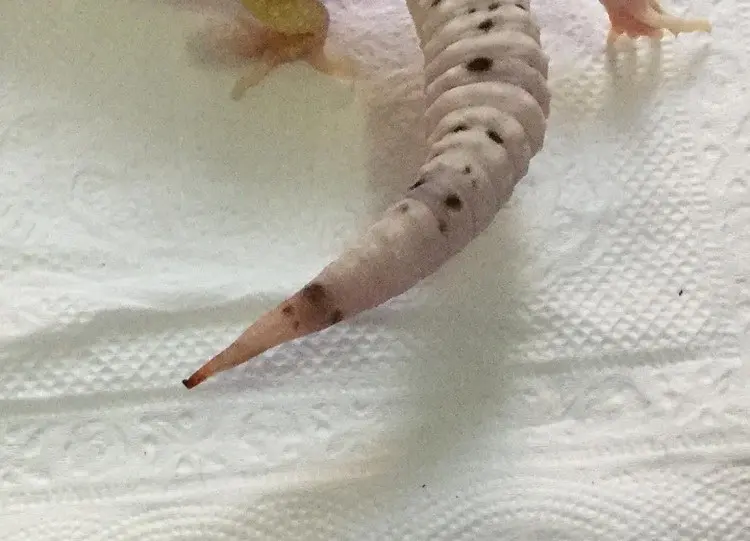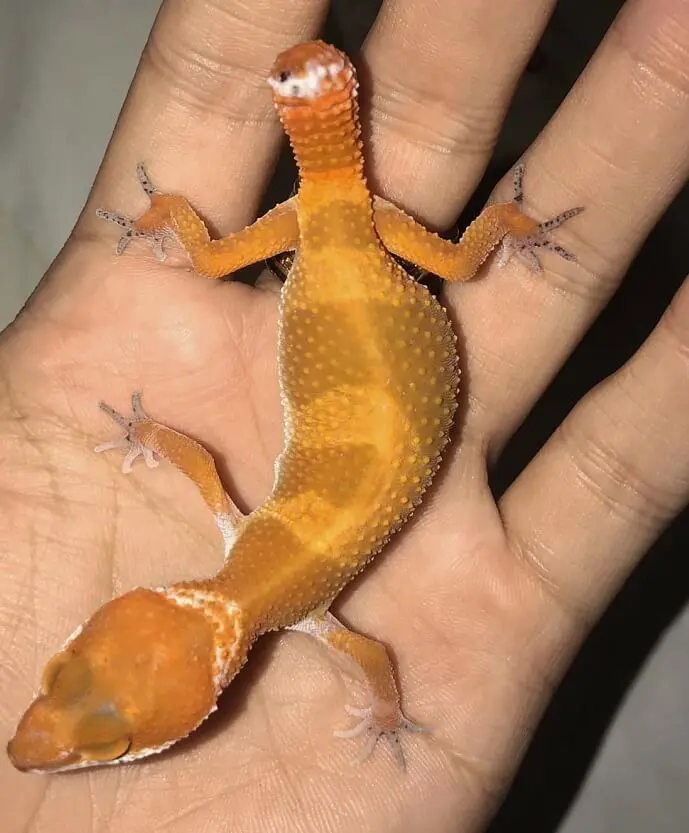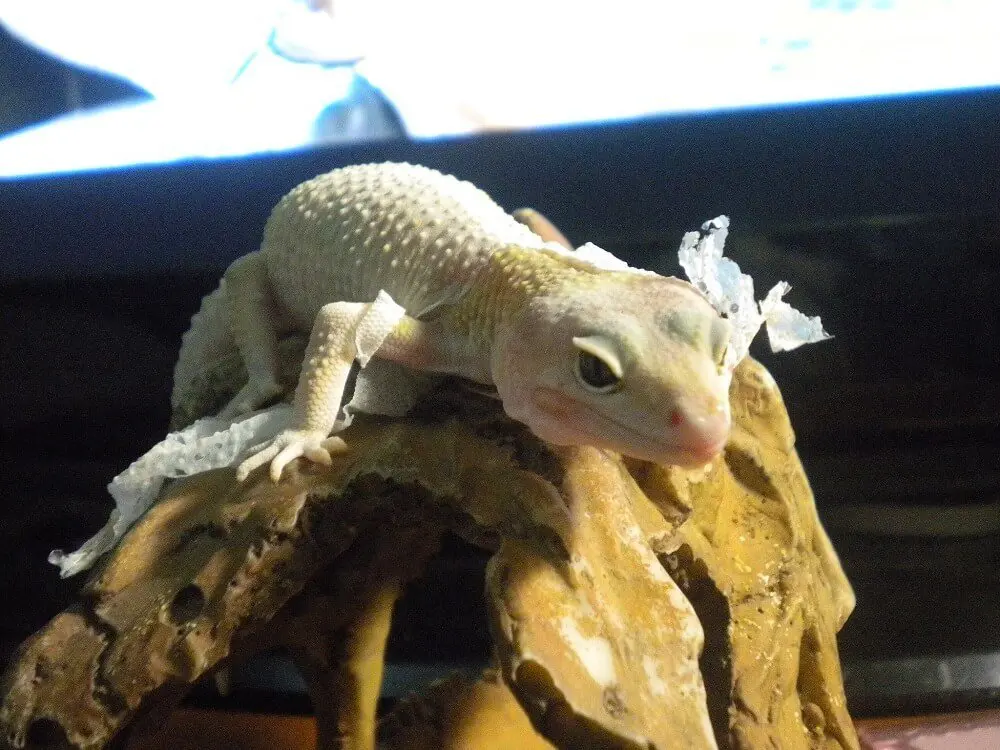Leopard gecko tail rot is something you need to know about as a reptilian pet owner. This is a common condition, but without proper care and treatment, it can be dangerous to your pet.
Many new leopard gecko pet owners have no clue when it comes to tail rot, even though they are warned about it when they purchase their gecko.
Continue reading below to find out about tail rot in leopard geckos, what to look for, and how to treat it effectively.
What is Tail Rot in Leopard Geckos?
Tail rot, also referred to as tail necrosis, is very common in pet lizards, but it can be devastating if the signs and symptoms are ignored.
The condition can quickly spread up the tail and lead to a systemic illness.
The good news is that tail rot is easily recognized and diagnosed by a vet.
You will see a noticeable color change in the tail along with the area infected becoming hard, dry, and inflexible.
Signs of Tail Rot

Leopard gecko tail rot
The first sign that your leopard gecko may have tail rot is the black color that appears on the tail.
It’s important that you don’t confuse tail rot with the shedding process. Your gecko will shed their skin in one piece rather than numerous smaller pieces.
There are some tell-tale signs you can look for, which can indicate that your leopard gecko may have tail rot, these include:
- The infected part of the leopard gecko tail will be dry
- The tail will look black or brown
- The tail will have a leather effect look
- The tail may break easily
- The tail will have no feeling where it is infected
How Do Leopard Geckos Get Tail Rot
It’s very important to know that tail rot in leopard geckos is very common and it’s not your fault that your gecko could be suffering right now. Some of the causes for tail rot in leopard geckos includes:
- Trauma to the tail
- Infection in the tail
- Blood clots lodging in the tail and restricting blood flow
- Abnormal shedding
- Hypothermia
- Cyst or abscess
- Insect bites

Blood clots lodging in the tail
Tail Rot Treatment
If your leopard gecko already has the signs of tail rot, then it’s too late to put preventative measures in place.
The main focus now should be to stop the rot traveling higher up the tail, while helping your gecko fight the tail rot and improve their health.
In the event you are convinced your leopard gecko has tail rot, then it will require a visit to the vet who will amputate the damaged part of the tail.

Leopard gecko tail loss
Remember your gecko has the ability to regrow its tail within thirty days. Amputation reduces the spread of the tail rot.
Infection is a serious problem when it comes to tail rot, which is why you will want to disinfect the area if there is any breaks or bite marks.
You can use diluted Betadine ointment, followed by an antibiotic ointment.
Surgery
Your leopard gecko will be placed under anesthetic and will be intubated for breathing.
The vet will anesthetize the tail and cut or break it off to reduce the spread. The skin will be cut just in front of where it has gone black. All the unhealthy tissue must be removed.
Some vets will stitch the wound, which reduces the risk of debris getting lodged during the healing process.
Medication
In addition to having the infected part of the tail amputated, the vet may prescribe some antibiotics to reduce the risk of infection and some pain killers to ease any pain your pet may experience.
Medications must be used as per the vet’s recommendations until the tail has healed. The risk of systemic infection is high and therefore most reptile pet owners treat their leopard geckos for at least thirty days.
Tail Rot Prevention
Preventing tail rot is considerably better than treatment. Treatment can work out expensive and requires your reptile pet being put under anesthetic to have the damaged portion of tail amputated.
There are a few steps you can take to prevent the risk of tail rot in your leopard gecko.
- Always buy leopard geckos from reputable breeders and pet shops
- Ensure you select the healthiest gecko as your pet
- Ensure you feed high-quality food
- Remove any safety concerns from the enclosure
- Ensure you maintain the right heating and humidity
- Allow your pet to shed on its own, do not pull pieces of skin off
- Ensure the right tank setup
- Keep the enclosure clean
- Contact vet the minute you suspect tail rot

Keeping an eye on your gecko when he/she is shedding will help to prevent tail rot
Conclusion
While tail rot is very common in leopard geckos, it’s imperative as a pet owner to know the signs and symptoms, preventative measures, and what to do if your pet gets tail rot, ensuring you provide the best health and care for your leopard gecko in the long run.